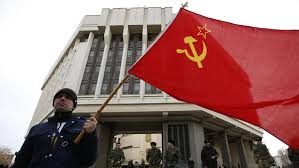Week in Review
The US Department of Labor released its monthly Non-Farm Payroll figure (NFP) last Friday disclosing that US employers had created 175,000 new posts during February beating analysts’ expectations of 149,000. This promising outcome reversed two consecutive months of very disappointing figures although these worrisome performances were largely accredited to a very harsh winter in North America. The unemployment rate was also published on Friday which did not support such a rosy picture since it inched higher during last month to 6.7% from a five-year low of 6.6% recorded in January.
Prominent analysts summarized this report by stating that although the result was definitely a step along the right path, it still was not sufficiently strong enough to help stocks retain the gains they acquired shortly after the announcement of the NFP. In contrast, the geopolitical drama in the Ukraine recaptured dominance as the day progressed, prompting investors to reduce their long positions before the weekend. Tension increased after Vladimir Putin, the President of the Soviet Union, ignored a warning fired by the US President, Barrack Obama, concerning military intervention in the Crimea. In response, Putin assertively advised that Russia will simply not ignore any pleas for help from its citizens residing in that region.
The situation exacerbated even more after Putin stressed during a lengthy telephone call between Washington and Moscow that the two opposing sides were still wide apart. Consequently, anxious investors took measures to protect their portfolios ahead of a potential East-West showdown that could occur over the weekend. As such, equities pared their earlier gains by slipping back towards their opening prices towards market close. Analysts endorsed the risk aversive stance instigated last Friday by explaining that investors were definitely correct in adopting a cautious status since anything could happen over the next couple of days.
What to Expect This Week
This week ahead will witness the presentation of a number of important global events:
Canadian will launch the new week by delivering its Housing Starts figure on Monday. After slumping for three consecutive months, the outcome is not expected to generate any significant impacts even if it badly misses analysts’ expectations.
On Tuesday, the Bank of Japan (BOJ) will announce its interest rate verdict as well as presenting a stimulus policy statement. No changes are expected this time around as the BOJ is predicted to sit on the fence until it acquires feedback from a pending sales tax hike. Great Britain will then issue its manufacturing and industrial production numbers which should register minor growth since the start of 2014. Finally, the USA will post its Wholesale Inventories later in the session. A poor release will almost certainly be blamed on the weather.
The UK will kick-off Wednesday by declaring its Trade Balance which is predicted to increase to 2.2 billion British pounds by reversing December’s contraction. Next, the Eurozone will report its Industrial Production which should register an increase of 0.5% during January compared to December’s decline of 0.7%.
Australia is scheduled to produce its key Labor Report on Thursday. After posting six weak months out of the last seven, a positive rebound this time would definitely boost the Australian dollar against other major currencies. China will subsequently issue its Industrial Production number. A disappointing result will once again bring the viability of the second largest economy in the world back into question. US Retail Sales will be posted later in the day which could register a strong rebound following last month’s dismal performance since weather conditions are finally starting to improve.
The Eurozone will disclose its critical labor report on Friday which should indicate that employment opportunities are picking up throughout the region. The USA will conclude the week by publishing a key consumer sentiment indicator.



